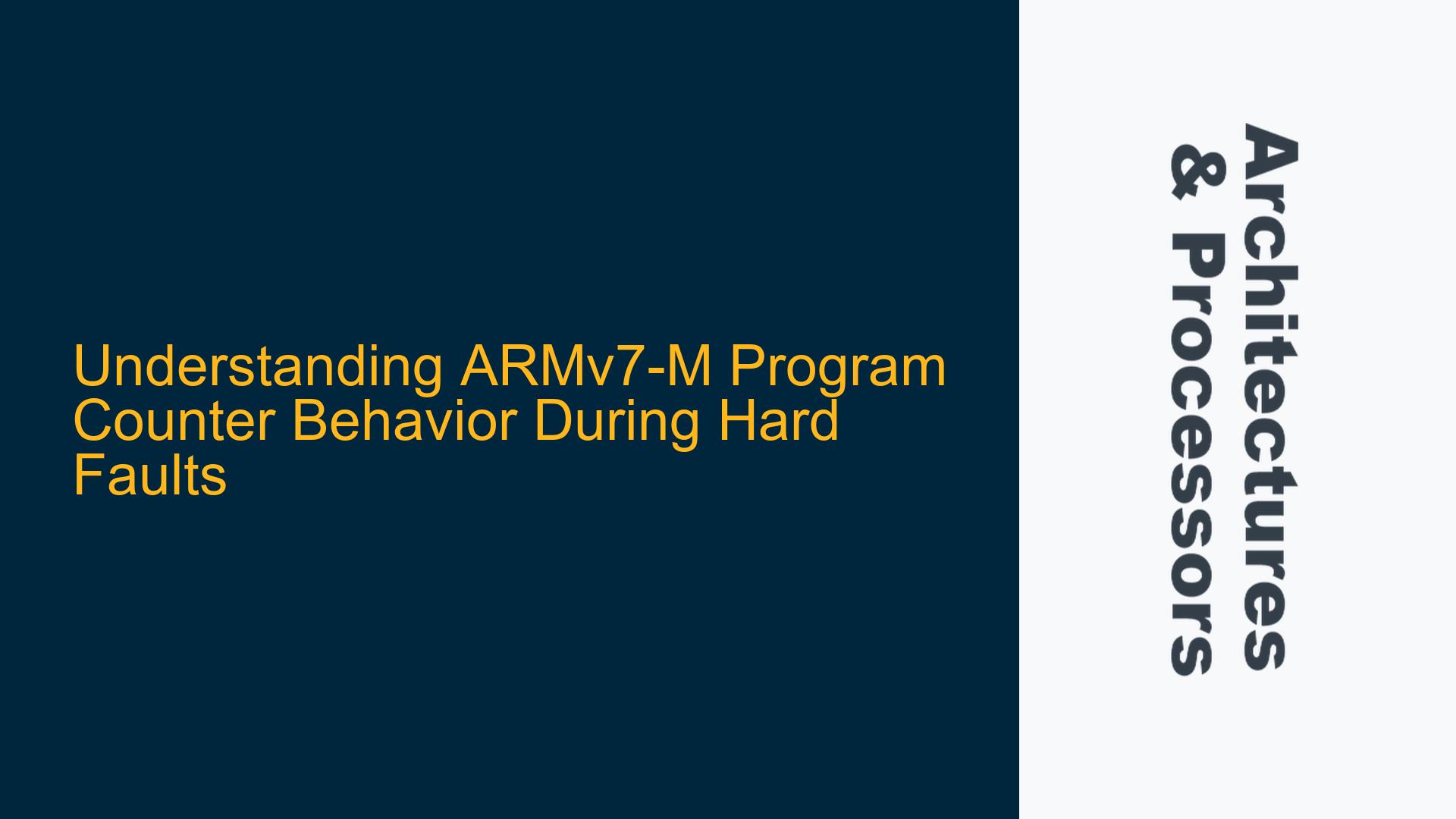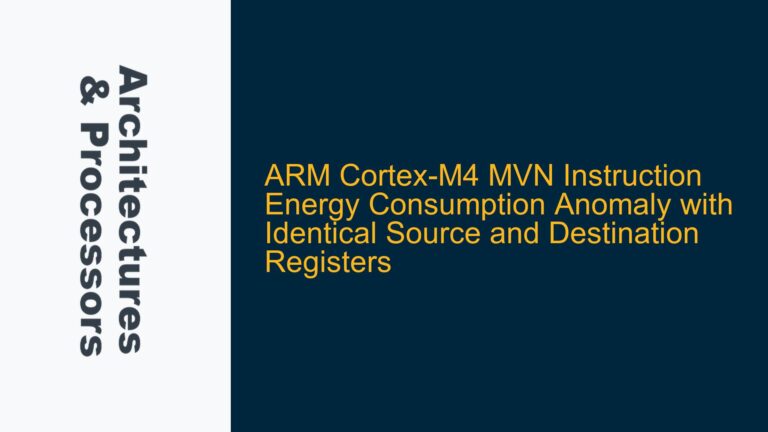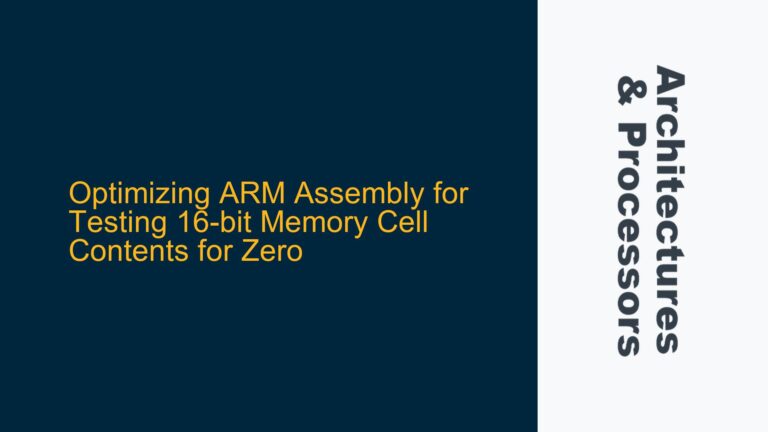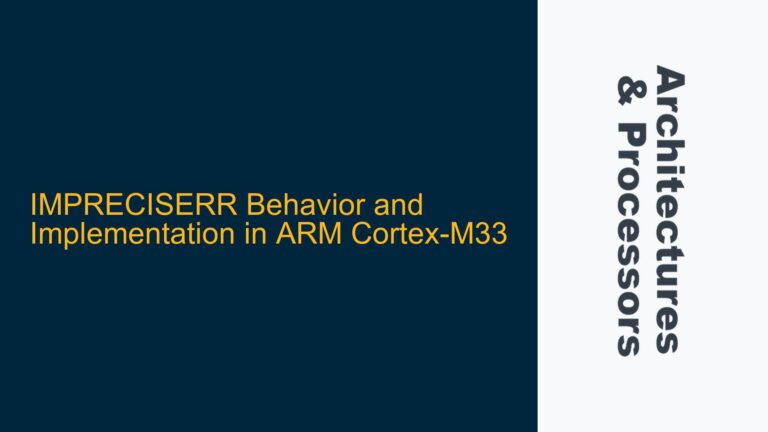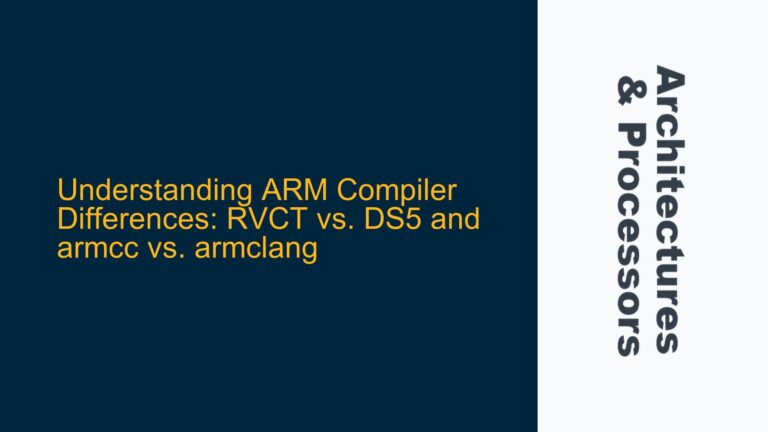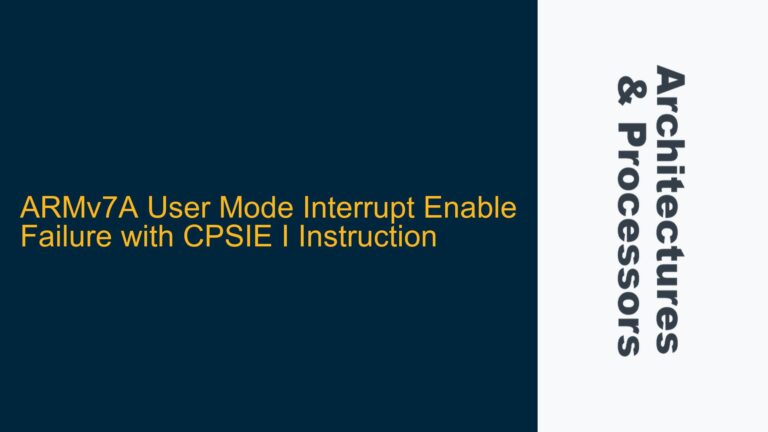ARMv7-M Program Counter Behavior During Instruction Execution
The Program Counter (PC) in ARMv7-M architecture plays a critical role in determining the flow of instruction execution. Understanding its behavior is essential for debugging, especially when dealing with hard faults. The PC is not just a simple counter that increments after each instruction; its behavior can vary depending on the context in which it is accessed or modified. This section delves into the nuances of how the PC is updated during instruction execution and how it behaves in different scenarios.
In ARMv7-M, the PC typically points to the next instruction to be executed. However, the exact value of the PC during instruction execution can be influenced by several factors, including the type of instruction being executed, the pipeline stage of the processor, and whether the instruction is part of a branch or a load/store operation. For example, when an instruction is being executed, the PC may already be pointing to the next instruction due to the pipelined nature of the ARM architecture. This means that by the time an instruction is being executed, the PC has already been updated to point to the subsequent instruction.
The ARMv7-M architecture manual provides detailed information on how the PC behaves in different contexts. For instance, when reading the PC directly using a MOV instruction, the value returned is typically the address of the current instruction plus 4. This is because the ARMv7-M architecture uses a 3-stage pipeline (Fetch, Decode, Execute), and by the time an instruction is being executed, the PC has already been updated to point to the next instruction. This behavior is consistent across most ARM cores, but there are exceptions, particularly when dealing with load/store instructions or branch instructions.
In the context of hard faults, understanding the PC behavior is crucial for determining the root cause of the fault. When a hard fault occurs, the processor captures the state of the PC at the time of the fault. This captured PC value can provide valuable information about the instruction that caused the fault. However, interpreting this value requires a deep understanding of how the PC is updated during instruction execution. For example, if the fault was caused by a load or store instruction, the PC value captured by the hard fault handler may point to the faulting instruction itself or to the next instruction, depending on whether the fault was synchronous or asynchronous.
Synchronous vs. Asynchronous Faults and Their Impact on PC Value
The behavior of the Program Counter (PC) during a hard fault can vary significantly depending on whether the fault is synchronous or asynchronous. Synchronous faults occur immediately after the execution of an instruction, while asynchronous faults can occur at any time, often due to external events such as bus errors or memory access violations. Understanding the distinction between these two types of faults is essential for accurately interpreting the PC value captured by the hard fault handler.
Synchronous faults are typically caused by instructions that generate an immediate exception, such as an invalid memory access or an undefined instruction. In these cases, the PC value captured by the hard fault handler will point to the instruction that caused the fault. This is because the fault is detected during the execution of the instruction, and the processor has not yet moved on to the next instruction. For example, if a load instruction attempts to access an invalid memory address, the fault will be detected immediately, and the PC value will point to the load instruction itself.
Asynchronous faults, on the other hand, are more complex. These faults can occur at any time, often due to external events that are not directly tied to the execution of a specific instruction. For example, a bufferable write operation may complete successfully, but a fault may occur later due to a bus error. In this case, the PC value captured by the hard fault handler may point to an instruction that was executed after the faulting instruction. This is because the processor may have already moved on to subsequent instructions by the time the fault is detected.
The Configurable Fault Status Register (CFSR) provides valuable information about the nature of the fault. The CFSR contains several bits that indicate whether the fault was synchronous or asynchronous. For example, the PRECISERR bit in the CFSR indicates that the fault was caused by a precise data access error, meaning that the fault was synchronous and the PC value points to the faulting instruction. Conversely, the IMPRECISERR bit indicates that the fault was caused by an imprecise data access error, meaning that the fault was asynchronous and the PC value may point to an instruction that was executed after the faulting instruction.
In addition to the CFSR, the Bus Fault Status Register (BFSR) and the Memory Management Fault Status Register (MMFSR) provide further details about the cause of the fault. These registers can help determine whether the fault was caused by a memory access violation, a bus error, or some other type of fault. By examining these registers, developers can gain a deeper understanding of the root cause of the fault and take appropriate corrective action.
Interpreting PC Values in Hard Fault Handlers and Debugging Strategies
Interpreting the Program Counter (PC) value captured by a hard fault handler requires a thorough understanding of the ARMv7-M architecture and the specific circumstances under which the fault occurred. The PC value can provide critical insights into the root cause of the fault, but it must be interpreted in the context of the fault type, the instruction being executed, and the state of the processor at the time of the fault. This section outlines strategies for interpreting PC values and provides guidance on how to use this information to debug hard faults effectively.
When a hard fault occurs, the processor captures the state of the PC and stores it in the stack frame. This PC value can be accessed by the hard fault handler and used to determine the instruction that caused the fault. However, as discussed earlier, the exact meaning of this PC value depends on whether the fault was synchronous or asynchronous. For synchronous faults, the PC value will point to the faulting instruction, while for asynchronous faults, the PC value may point to an instruction that was executed after the faulting instruction.
To interpret the PC value correctly, developers should first examine the Configurable Fault Status Register (CFSR) to determine the nature of the fault. If the PRECISERR bit is set, the fault was synchronous, and the PC value points to the faulting instruction. If the IMPRECISERR bit is set, the fault was asynchronous, and the PC value may point to an instruction that was executed after the faulting instruction. In this case, additional debugging techniques may be required to identify the exact instruction that caused the fault.
One common technique for debugging hard faults is to use a disassembler to examine the instructions surrounding the captured PC value. By disassembling the code at and around the PC value, developers can gain insights into the sequence of instructions that led to the fault. This can help identify potential issues such as invalid memory accesses, undefined instructions, or incorrect branching.
Another useful technique is to examine the stack frame captured by the hard fault handler. The stack frame contains not only the PC value but also the values of other registers, such as the Link Register (LR) and the Stack Pointer (SP). These register values can provide additional context about the state of the processor at the time of the fault. For example, the LR value can indicate the return address of the function that was executing when the fault occurred, while the SP value can provide information about the stack usage.
In some cases, it may be necessary to use a debugger to step through the code and examine the state of the processor at each step. This can help identify the exact instruction that caused the fault and provide insights into the root cause of the issue. Debuggers can also be used to set breakpoints and watchpoints, which can help capture the state of the processor at specific points in the code.
Finally, developers should consider using hardware-assisted debugging tools, such as trace analyzers or logic analyzers, to capture additional information about the state of the processor and the system at the time of the fault. These tools can provide detailed insights into the sequence of events that led to the fault and help identify potential issues such as timing violations, bus errors, or memory access violations.
In conclusion, interpreting the PC value captured by a hard fault handler requires a deep understanding of the ARMv7-M architecture and the specific circumstances under which the fault occurred. By examining the CFSR, disassembling the code, analyzing the stack frame, and using debugging tools, developers can gain valuable insights into the root cause of the fault and take appropriate corrective action.
